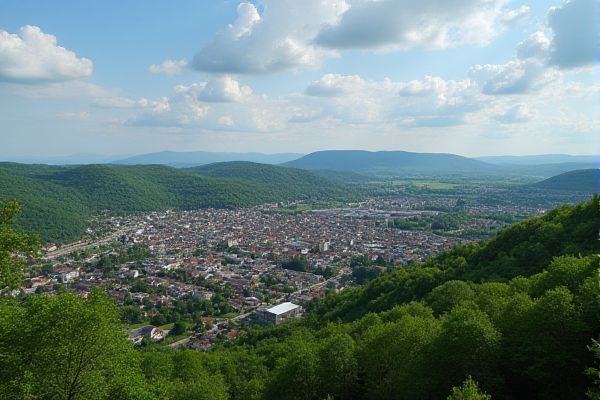
Safety and crime rates in Vermont: Low overall crime rate statewide. Safe rural communities prevalent. Low violent crime incidents. Petty thefts in tourist areas. Strong community policing presence. Vermont State Police effective. Crime rates vary by locality. Montpelier: one of the safest cities. Encourage neighborhood watch programs. Comprehensive emergency response systems.
Low overall crime rate statewide.
Vermont boasts a remarkably low overall crime rate, with a statewide property crime rate of 1,671 per 100,000 residents, which is 14% lower than the national average. Its violent crime rate stands at 222 per 100,000 residents, making it 42% lower than the national average. These impressive statistics rank Vermont among the safest states in the U.S., highlighting its commitment to public safety. For more information on this impressive achievement, visit the Safest Cities in Vermont page.
Safe rural communities prevalent.
Vermont is characterized by its low crime rates, with many safe rural communities. Cities like Hinesburg and Bristol are among the safest, with Hinesburg having a violent crime rate of 21 per 100,000 residents and Bristol a property crime rate of 107 per 100,000 residents, reflecting the state's overall low crime statistics.
Low violent crime incidents.
Vermont boasts one of the lowest violent crime rates in the nation, with a rate of 2.4 incidents per 1,000 people, ranking as the sixth lowest nationwide. Despite a recent surge in crime rates, Vermonters remain less concerned about violent crime than most Americans, with their concern being 20% lower than the national average. The state is widely regarded as secure, with 65% of its residents feeling safe, a figure that greatly surpasses the national average. For more insights into Vermont's safety levels, you can explore the comprehensive analysis on the Safest Cities Vermont website.
Petty thefts in tourist areas.
In Vermont, petty thefts, particularly larceny, are higher than the national average, with a rate of 1,426 per 100,000 residents, although overall property crime rates have decreased by 33% between 2012 and 2022. This trend suggests that while there is a significant presence of petty theft, the overall crime rate is still relatively low compared to national averages. For further insights and statistical analysis, you can explore the Vermont Criminal Justice Data Snapshot compiled in December 2023, which provides a comprehensive overview of the state's safety and justice metrics.
Strong community policing presence.
Vermont emphasizes strong community policing through the Vermont State Police, who focus on reducing crime, enforcing the law, and maintaining criminal justice. The department encourages community involvement through tools like the CrimeReports map, anonymous tip submissions, and offender notifications to foster a safe and cooperative environment. For more information on these initiatives, visit the Vermont State Police Prevention website.
Vermont State Police effective.
The Vermont State Police is highly effective in maintaining safety and reducing crime rates in Vermont, with 332 sworn members and 64 emergency dispatchers covering 90% of the state's land mass and half of its population. They provide various crime prevention programs and emergency services to ensure public safety. For more information, visit the Vermont State Police website.
Crime rates vary by locality.
Crime rates in Vermont vary significantly by locality, with cities like Thetford and Lyndonville having lower crime indices, while cities like Burlington and Rutland have higher crime indices, indicating a diverse range of safety levels across different areas of the state. For more detailed insights on these variations, you can explore the Vermont State Crime Index on USA.com.
Montpelier: one of the safest cities.
Montpelier, though not explicitly listed as one of the top safest cities in the 2024 report, benefits from Vermont's overall low crime rates. Vermont has some of the lowest crime rates in the country, with the safest cities reporting significantly lower violent and property crime rates compared to the state average. To learn more about Vermont's safety rankings and its safest cities, visit the Safewise Blog.
Encourage neighborhood watch programs.
Neighborhood Watch programs in Vermont foster collaboration between residential neighborhoods and law enforcement to enhance safety and protect property. These initiatives include systematic procedures for gathering information, which are crucial to aiding in the apprehension of criminal offenders. By focusing on proactive measures, the Neighborhood Watch program effectively contributes to the reduction of crime in residential areas. To learn more about these initiatives, you can visit the Neighborhood Watch page, which provides comprehensive details on how communities can participate in these crime-prevention efforts.
Comprehensive emergency response systems.
Vermont's comprehensive emergency response system is outlined in the State Emergency Management Plan, which addresses natural, technological, and human-caused emergencies through a coordinated effort involving all state agencies and departments across five mission areas: Prevention, Protection, Mitigation, Response, and Recovery.
